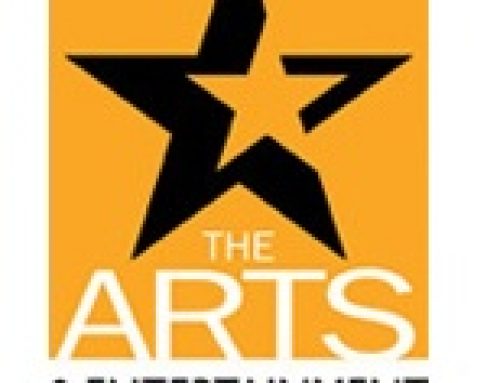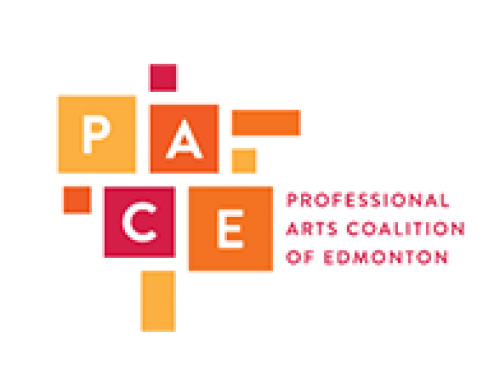Factors in Canadians’ Arts Attendance in 2010 Statistical insights on the arts, Vol. 11 no 1 September 26, 2012 Hill Strategies Research Inc www.HillStrategies.com
Factors in Canadians’ Arts Attendance in 2010, the 38th report in the Statistical Insights on the Arts series from Hill Strategies Research, examines the dynamics of attendance at five arts activities: art galleries, theatres, classical music performances, popular music performances, and cultural festivals. In addition to an analysis of demographic factors, the report provides substantial information about cultural crossovers. The analysis of “cultural crossovers” examines whether participants in one cultural activity are more or less likely to attend other arts activities.
One of the key conclusions of the report is that many cultural activities have an influence on attendance rates at other activities above and beyond demographic factors. In fact, the analysis in the report shows that cultural experiences and exposure appear to be more important factors in arts attendance than demographic factors.
A person’s cultural exposure can affect their likelihood of attending arts activities. For example, someone with less than a secondary school diploma was not very likely to visit an art gallery in 2010: only 20% did so. However, someone with the same level of education who attended a classical concert in 2010 was much more likely to visit an art gallery: 44% did so in 2010. The strength of the cultural crossovers is similar for each of the arts activities examined in this report.
Detailed statistical modeling, which attempts to isolate the effects of individual demographic factors and cultural crossovers, shows that many cultural activities are statistically significant predictors of attendance at other types of activities (keeping other factors constant, such as education, income, age, etc.). All of the cultural activities examined were positively correlated with each other, meaning that many cultural participants attend a range of different activities.
The statistical modeling found that, among demographic factors, education was a very strong factor in attendance at art galleries, classical music performances, and cultural festivals. Household income was a key factor in theatre and pop music attendance.
Previous studies have shown that a person’s childhood arts education is an important factor in adult arts participation. Other studies have examined motivations, values and beliefs related to arts attendance. However, the General Social Survey did not ask respondents about these other potential factors, and, as such, they are not analyzed in this report.
Implications for audience building in the arts
A straightforward conclusion that could be drawn from the analysis of cultural crossovers is that marketing efforts should be targeted toward attendees at activities that are strongly correlated with attendance at another type of arts activity.
In addition, the findings in the report also imply that cultural experiences and exposure might be more important factors in arts attendance than most demographic factors. In other words, there is an arts-interested public that transcends demographic analysis.
Conversely, where specific demographic factors have a negative correlation with attendance at certain activities, additional outreach efforts might be helpful in order to attract more people from that demographic group.
Are the cultural crossovers and demographic factors consistent between activities?
There is some consistency in the cultural and demographic factors with the highest attendance rates at the five arts activities analyzed in the report (art galleries, theatres, classical music performances, popular music performances, and cultural festivals). There are 14 different factors among the top ten highest attendance rates. Nine are other cultural activities, while the other five are demographic factors. In particular:
o All five of the arts activities examined in detail in this report are among the top ten factors in each of the four other arts activities.
o Attendees at three other cultural activities (museums, cultural/heritage performances, and historic sites) are among the top ten factors in all five arts activities.
o Among demographic factors, very high household income (i.e., $150,000 or more) is among the top ten factors in four arts activities. A high level of formal education (i.e., university degree) is among the top ten factors in three of the arts activities.
However, there are many differences in the specific cultural activities that are most strongly correlated with other activities. As such, it is not possible to indicate, for example, that all cultural managers should target classical music attendees. A more thorough review of the findings (presented below) is required in order to most effectively target marketing efforts.
Specific findings for each of the five arts activities
Art gallery attendance
Art gallery attendance rates are highest for performing arts, museum, and festival attendees. A statistical model prepared for the report shows that four cultural activities are very strongly correlated with art gallery attendance: attendance at another type of museum, classical music attendance, festival attendance, and historic site visits.
Education is the strongest demographic factor in art gallery attendance. Household income was also found to be a significant factor in art gallery attendance.
Theatre attendance
Other performing arts attendees and art gallery visitors are very likely to attend theatre performances. Theatre attendance is highest for those Canadians who attended a classical music performance, followed by those who attended a performance of cultural or heritage music, theatre or dance (e.g., Aboriginal, Chinese, Ukrainian) or a type of cultural performance not included in the other survey categories. Theatre attendance is also quite high among those who visited an art gallery in 2010.
The statistical model of theatre attendance shows that four cultural activities are very strongly correlated with theatre attendance: classical music attendance, movie going, popular music attendance, and cultural/heritage performance attendance.
Interestingly, theatre attendance rates varied for almost all demographic factors examined in this report. In fact, only one of the 13 demographic factors (presence of children in the household) did not show a variation in theatre attendance rates. Education and income are particularly strong demographic factors in theatre attendance.
Classical music attendance
Classical music attendance is highest among visitors to art galleries, cultural/heritage performances, theatres, and festivals. The statistical model of classical music attendance shows that theatre and art gallery attendance are very strongly correlated with attendance at classical concerts.
Important demographic factors in classical music attendance include education, income, age, and residing in an urban area.
Popular music attendance
Festival, classical music, and cultural/heritage performance attendees are very likely to attend pop concerts. The statistical model of pop music attendance indicates that attendance at festivals and theatres is very strongly correlated with popular music attendance, even keeping other factors constant (such as education level, income level, other arts attendance, etc.).
Household income was found to be the strongest demographic factor in pop music attendance. Other important demographic factors include urban residence and age (with younger Canadians attending pop concerts more commonly than older Canadians). Interestingly, with all of the other factors in the model taken into account, education was not found to be a statistically significant factor in pop music attendance. In part, this might be due to the inclusion of many cultural crossovers, which might already differentiate those with higher levels of education from those with less formal education.
Festival attendance
Attendance at cultural festivals is most common for Canadians who also attended other cultural activities, such as cultural or heritage performances, classical music performances, art gallery exhibitions, pop concerts, museum exhibitions, and types of cultural performances not specifically included in the other survey categories.
The statistical model of festival attendance shows that attendance at four cultural activities is very strongly correlated with festival attendance: cultural/heritage performances, pop concerts, art galleries, and other performing arts events.
Important demographic factors in cultural festival attendance include education, income, and age (with younger Canadians attending festivals more commonly than older Canadians).
Full report also available
The preparation and distribution of this report were funded by the Department of Canadian Heritage, the Canada Council for the Arts and the Ontario Arts Council. The full report is available on the websites of Hill Strategies Research (http://www.hillstrategies.com), the Canada Council for the Arts (www.canadacouncil.ca), and the Ontario Arts Council (www.arts.on.ca).
________________________________________
Hill Strategies Research is a Canadian company that specializes in applying social science research methods to the arts sector. Hill Strategies has extensive experience conducting, interpreting, and communicating quantitative and qualitative analysis in the arts.
________________________________________
Data source
The data in this report are drawn from Statistics Canada’s General Social Survey of 2010, an in-depth telephone survey of about 7,500 Canadians 15 years of age or older.The report summarizes data on Canadians who attended at least one of five different arts activities during the 12 months prior to the survey.
Individuals are counted as an “attendee” at a particular activity if they went at least once in 2010. However, respondents are counted only once in each activity regardless of how many times they attended during the year. It is also important to note that the data include attendance of Canadian residents while travelling out of the country and exclude attendance by residents of other countries while travelling in Canada.




